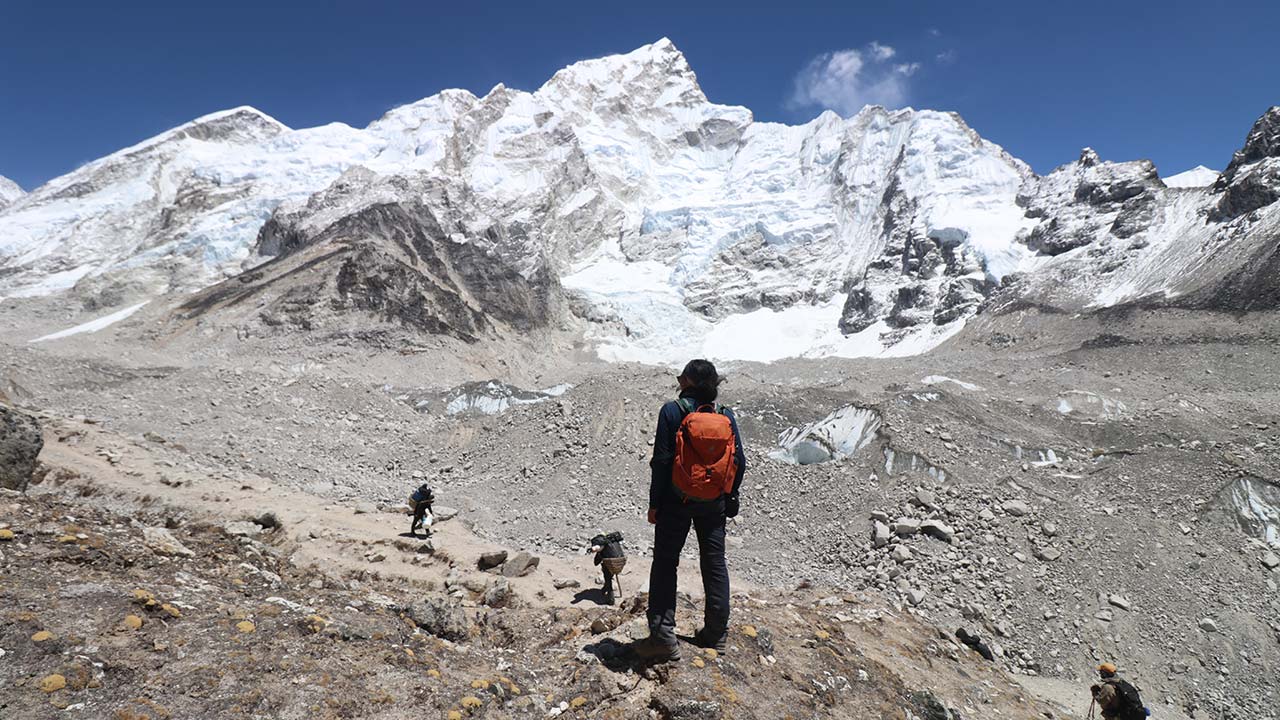For many adventure lovers, trekking to Everest Base Camp is in lifetime journey. The idea of walking beneath the world’s highest peak feels exciting, but it also raises an important question like ‘Is Everest Base Camp safe for beginners?’ Well the truth is, while thousands of trekkers complete the journey every year, it is not exactly a walk in the park. The safety on this trail depends less on luck and more on how well you are prepared, informed and aware before stepping into the Khumbu region.
This classical Everest Base Camp Trek is not a technical climb. You don’t need ropes or mountaineering skills. But it is still a high-altitude trek that reaches above 5,000 meters, where the air is thin, the weather is cold and long days of walking will test your endurance. Yes, the route of this mainstream trek in the Himalayas is well-established, with villages, lodges and basic facilities available along the way. However, altitude and weather can change things quickly if you are not careful.
So to answer your ‘Is Everest Base Camp Trek safe for beginners?’ question, yes, it is. But, only if you approach with the right mindset and preparation. You need to respect the mountains, take proper acclimatization days, do mental and physical preparation and be mindful of your body language. This Everest Base Camp Trek safety guide breaks down what safety really means on the EBC trek, the risks involved and how, as a first-time trekker, you should be prepared to experience one of the greatest journeys on Earth with confidence.
Understanding Everest Base Camp Trek Safety
Before deciding whether is Everest Base Camp trek is safe for beginners or risky, it is important to understand what safety actually means in this Himalayan adventure. This classic base camp adventure is not dangerous by design. But, it does take you to significant altitudes where preparation, pacing and altitude awareness matter more than strength. The main factor influencing safety on this high-altitude route is altitude.
Most health issues arise not from the trail itself; there aren’t any technical segments along the route. The challenges lie in letting your body adapt to thinning air as you climb higher. That is why rest days in places like Namche Bazaar (3,440 m) and Dingboche (4,410 m) are built in the standard Everest Base Camp Trek itinerary. These acclimatization stops allow your body to adapt to an atmosphere with a low oxygen level and prevent the risk of altitude sickness, the biggest challenge for beginners.
Another major element of Everest Base Camp trek safety is preparation. Understanding the route, training in advance, carrying proper gear and having travel insurance make a huge difference. Most problems on the trail occur when trekkers rush, overexert, or underestimate the environment. Likewise, seasons also play a crucial role. The peak seasons for trekking in Nepal, like spring (March to May) and autumn (September to November), are considered the safest periods. During these seasons, the skies are clear, the weather is stable and trekking routes are easy to navigate.
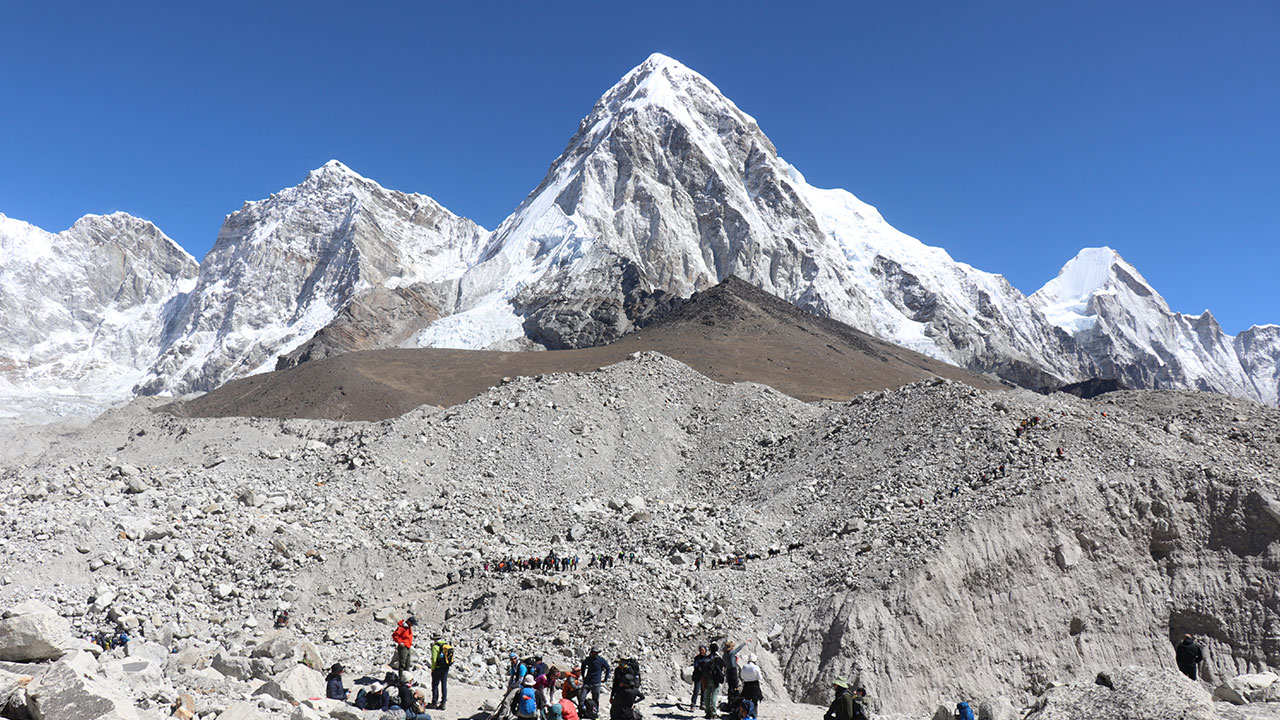
As for the Everest Base Camp Trekking during the off-season, you will have to face the seasonal challenges. During monsoon (June to August), the weather is unfavorable, the trail is slippery, the downpour is pretty consistent and you may have to deal with back-to-back flight rescheduling. The winter season (December to February) is another challenging period for this trek. In winter, the high-altitude trails are covered in snow and the temperatures drop to below freezing points.
On the reassuring side, the Everest Base Camp Trek route is well-structured. While doing this trek, you will never be far from a village or teahouse. Villages along the trekking route like Phakding, Namche, Tengboche, Dingboche, Lobuche and Gorak Shep, provide accommodation, meals and basic communication services. There are also health posts along the way and experienced guides add an extra layer of security. So, the overall adventure is far safer than most people would expect, considering the altitude and remoteness of the region.
Still, EBC trek takes you to a high-altitude environment. Beginners who respect the altitude, pace themselves properly, follow an acclimatization calendar and prepare adequately will find this journey both safe and rewarding. You can take it as an adventure that tests endurance without crossing into danger.
Is Everest Base Camp Risky? The Real Challenges Explained
Many beginners who are thinking about taking on this route ask the question, ‘Is Everest Base Camp risky?’. And to be honest, it is a fair question. Although this journey to the eastern Himalayas does not involve technical climbing or extreme danger, it does come with its own set of real challenges. It is important for every first-timer to understand these aspects. Listen, knowing these risks is not meant to scare you. Instead, take it as the first crucial step to stay safe and prepared for the Everest Base Camp Trek.
One of the biggest concerns on the trail is altitude sickness. As you climb above 3,000 meters, the oxygen level in the air starts to drop gradually and your body needs sufficient time to adjust. You might start showing symptoms like headaches, dizziness, nausea, insomnia, loss of appetite and fatigue if you ascend too fast. But don’t worry, you will be able to easily tackle the altitude-related complications with proper acclimatization days and by listening to your body.
But remember, if ignored, altitude sickness can quickly turn into serious conditions like High-Altitude Pulmonary Edema (HAPE) and High-Altitude Cerebral Edema (HACE). That is why awareness is your strongest safety tool. Another factor that can make the trek risky is unpredictable weather. The conditions in the Himalayas can change without warning. Clear skies in the morning can turn into snow or fog by afternoon. This unpredictability factor is at an all-time high during the off-season and it can affect flight schedules as well as trekking conditions.
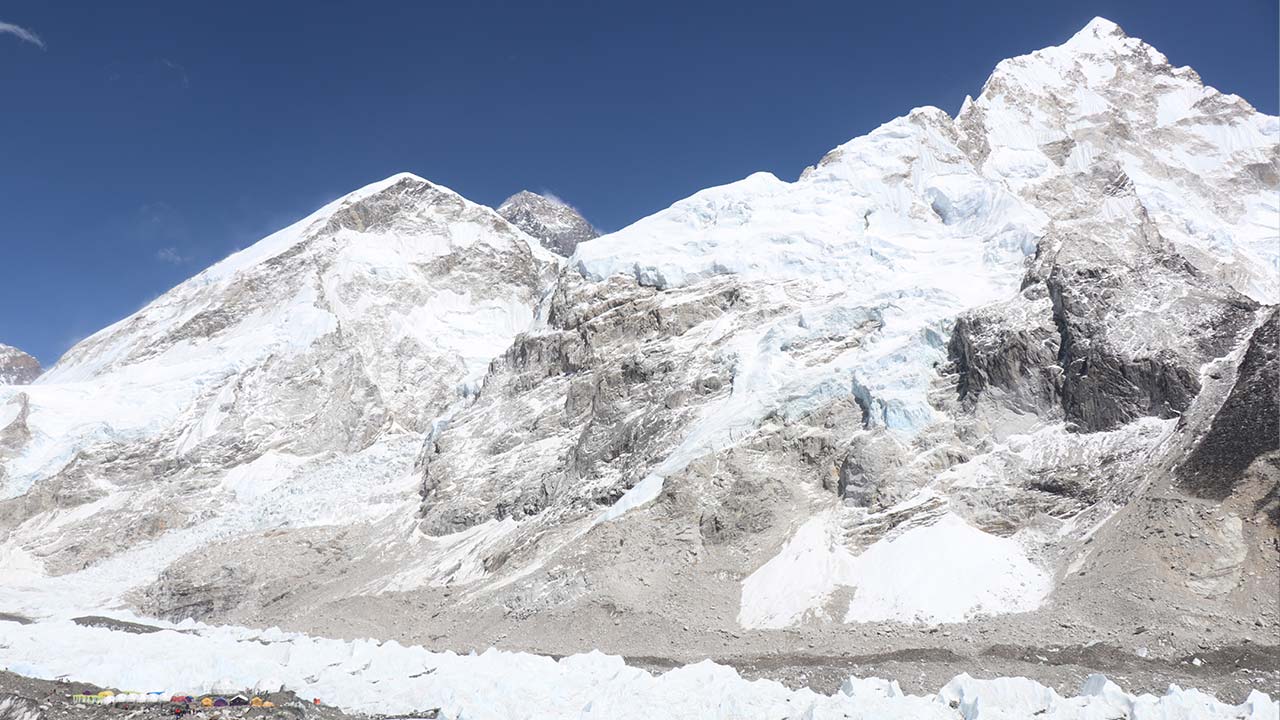
That’s why choosing the right season and keeping a flexible itinerary will reduce this risk considerably. Moreover, the trail fatigue is another challenge that beginner trekkers often underestimate. The Everest Base Camp trail involves 5 to 7 hours of walking every day on the rugged, uneven and sometimes steep segments. Although the route is not dangerous in itself, exhaustion can lead to poor judgment or slower responses. Thus, staying hydrated, eating well-balanced nutritious meals and pacing yourself will help you maintain the energy levels throughout the journey.
So, is the Everest Base Camp trek risky? It is not, if you respect its challenges. The risks exist, but they are manageable with preparation, awareness and the right mindset. Thousands of beginners safely complete the journey every year, not because the trek is easy, but because they approach it with patience and caution.
Altitude and Acclimatization: The Core of Everest Base Camp Trek Safety
When it comes to Everest Base Camp trek safety, altitude is the single most important factor. The journey takes you from Lukla at 2,860 meters to Everest Base Camp at 5,364 meters. This rapid elevation gain can even challenge experienced hikers. What makes or breaks the trek for beginners is not the fitness alone. But it is about how well your body adapts to the thinning air condition. As you traverse higher on the trekking route, the oxygen level in the atmosphere drops sharply. At Everet Base Camp, the oxygen level is roughly 50% of what it is at sea level.
If the ascent is too fast, your body won’t get enough time to acclimatize, which will trigger the Acute Mountain Sickness (AMS). That is why the Everest Base Camp Trek package includes acclimatization days in its itinerary plan. Don’t take the acclimatization day as a rest day for comfort. They are essential breaks for your body to produce more red blood cells and adapt to the reduced oxygen levels before climbing even higher. The two main acclimatization stops are at Namche Bazaar (3,440 m) and Dingboche (4,410 m). During acclimatization days at these destinations, trekkers usually do short acclimatization hikes before returning to sleep at a lower altitude.
To deal with altitude sickness, hydration also plays a big role. As dehydration can worsen AMS symptoms, you are encouraged to drink plenty of water. Make sure to drink at least 3 to 4 liters of water during the trekking days and avoid alcohol or smoking at any cost. Maintaining a proper steady pace, eating a balanced diet and being aware of the symptoms of altitude sickness will further reduce its risks.
So, in summary, altitude is one of the major challenges of the Everest Base Camp Trek. However, by giving the body enough time to adapt and following a gradual ascent, even beginners can safely complete this trek without serious altitude issues. Respect the mountain, take it slow and the Himalayas will take care of you in return.
Physical Demands: How Fit Should a Beginner Be?
One of the most common questions beginners taking on this route ask is “Do I need to be super fit to trek to Everest Base Camp?’ The honest answer is no you don’t need to be an athlete. But a basic level of fitness and endurance is absolutely essential to enjoy this trek comfortably. The trek doesn’t involve technical climbing or rope work, but it does demand consistency, stamina and mental determination over several days of hiking at high altitude.
During the EBC Trek, you will need to walk around 5 to 7 hours a day on average. The path also varies day-to-day. Some days you need to follow the steady ascents through pine forests and suspension bridges. Meanwhile, on other days, you have to overcome steep climbs over rocky trails. At higher altitudes, even short distances can feel exhausting because of the thinning air conditions. That is why pacing yourself and maintaining a steady rhythm is far more important than speed.
A good level of training before the trek makes a huge difference. If you are a beginner, you should start your training at least 6 to 8 weeks before the trek. The primary focus of your training should be on strength, cardiovascular, endurance and flexibility exercises. It is possible, include practice hikes in your preparation plan as well. Doing hikes carrying your backpack will prepare you for the physically demanding Himalayan journey. It is also a wonderful opportunity for acclimatization practice and testing your new trek gear.
However, you need to understand that fitness alone doesn’t guarantee comfort on the trail. Mental preparation is also equally important as physical preparation. The Everest Base Camp Trek will test your patience level when dealing with changing weather, long walking days and basic services at the higher altitudes. So, staying positive, flexible and focused on the goal will help you handle the fatigue and better. This mentality will significantly complement your physical strength.
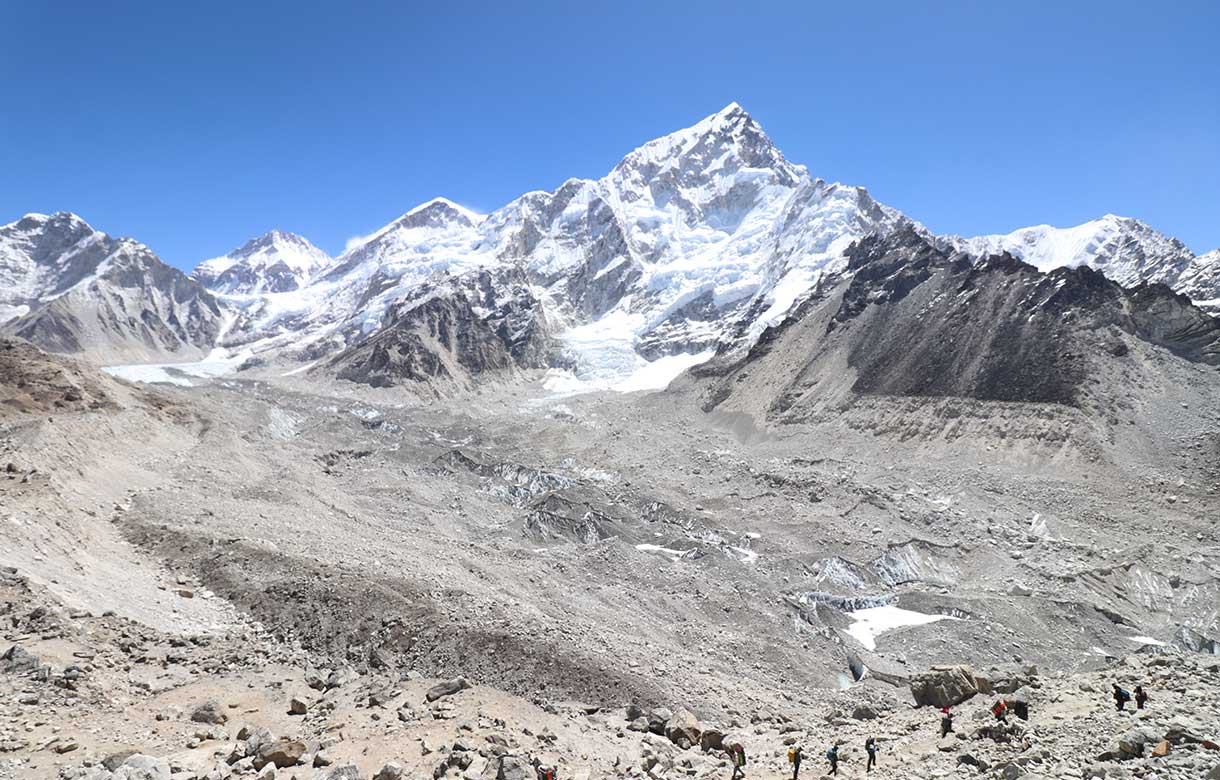
Is Everest Base Camp Safe for Beginners or Should You Go Guided?
Now that you have got your answer for is Everest Base Camp safe for beginners, let’s discuss another troubling question for first-time trekkers, ‘Should you trek solo or join a guided group?’. Well, both options are possible, but when it comes to safety, comfort and overall experience, going with a licensed guide or a reputable trekking agency is highly recommended. Trekking solo gives you full freedom over your pace and schedule, but it also comes with certain risks.
Without a guide, you will be solely responsible for navigation, logistics and emergency decisions. While the main trail to Everest Base Camp is well-marked and busy during peak seasons, weather conditions can change quickly and altitude symptoms may catch you off guard. In case if something goes wrong, having no immediate support can make a manageable issue much more stressful. On the other hand, a guided trek adds a strong layer of security and convenience.
The professional guides are trained in altitude management, first aid and local geography. They will monitor your health along the route, help you recognize early signs of AMS and handle logistic details like accommodation, meals and flight coordination. They are also the ones who will arrange the helicopter evacuations or contact nearby health posts in case of emergencies. Handling these things on your own is not easy and can be quite stressful if you are familiar with the route and procedures.
Another overlooked benefit of trekking with an expert guide is the cultural insights you will get during the trek. The Khumbu region is home to Sherpa communities rich in history and spirituality. A local guide will help to bridge that connection, share stories and folktales, help you understand customs and traditions, and act as your translator for you to have meaningful communication with the natives.
So, trekking to Everest Base Camp solo is possible for experienced travelers, but it may not be the safest choice for beginners. A guided trek offers you peace of mind, safety assurance, and a smoother overall experience. If you trek with a guide or agency, it will allow you to focus on enjoying the trail rather than worrying about other minor details.
Emergency and Rescue Facilities on the Everest Trail
Even though the Everest Base Camp trek is generally a safe adventure, it is still important to understand what emergency and rescue options exist along the trail. Understanding these factors is essential because, at the high altitude and remote stretches of the Himalayas, preparation is everything. Fortunately, the Everest region has developed a solid safety infrastructure over the years, especially for trekkers who may face altitude-related or medical issues.
As this trail takes you to the isolated part of the Himalayas, the most crucial support comes from helicopter evacuation services. In serious cases of altitude sickness, injury, or illness, trekkers can be airlifted from different points on the trail. Helicopter rescues are quick and efficient, but they are also expensive. That is why you need to get travel insurance that covers high-altitude evacuation (up to 6,000 m). For less severe conditions, there are several medical aid posts and health centers along the route. The Himalayan Rescue Association (HRA) operates clinics at Pheriche and Monjo.
These clinics are staffed with trained doctors who specialize in altitude-related issues. These centers provide consultations, oxygen support and guidance for trekkers showing symptoms of Acute Mountain Sickness (AMS). If you are doing the trek through an agency, most of the guides are also trained in basic first aid and can monitor your oxygen levels using oximeters. Furthermore, the trekking agencies even maintain direct contact with rescue teams in Kathmandu to coordinate quick responses if necessary.
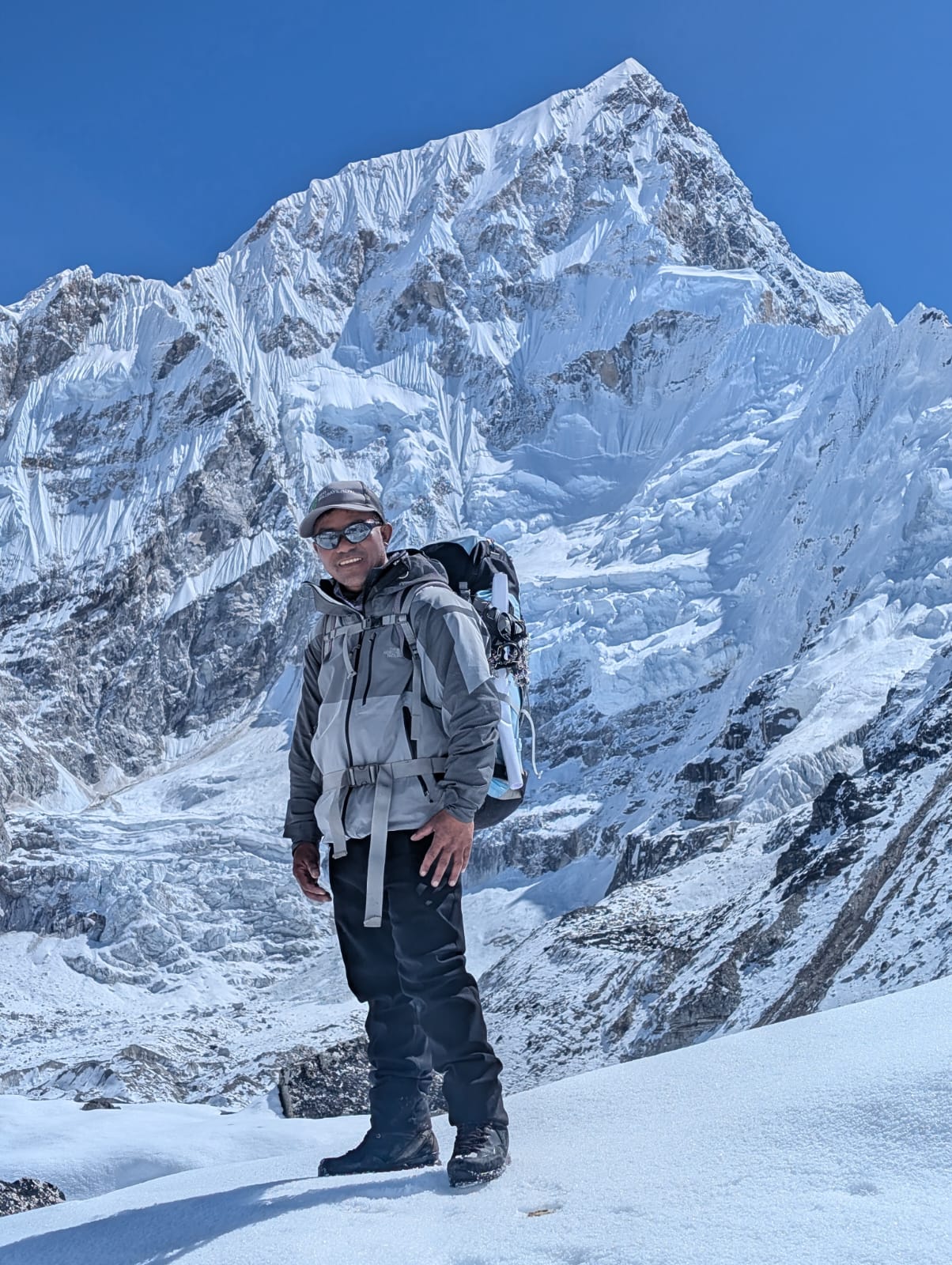
Practical Safety Tips for Beginners on the Everest Base Camp Trek
- Ascend gradually and never rush the climb or skip acclimatization days; slow and steady progress helps your body adjust to the altitude safely.
- Drink plenty of water throughout the day, even if you don’t feel thirsty; proper hydration reduces the risk of altitude sickness
- Eat nutritious meals, choose warm and simple foods that provide steady energy for long walking hours, instead of going for the taste
- Avoid alcohol and smoking, as both of these can reduce oxygen levels in the blood and make altitude adjustment more difficult.
- Wear proper gear to easily navigate the trail and keep yourself warm and comfortable
- Listen to your body language; if you show any symptoms of altitude sickness, take it seriously and rest or descend if needed
- Trek in the right season, like spring (March to May) and autumn (September to November), they offer stable weather and safer trekking conditions
- Get travel insurance and make sure it includes coverage for high-altitude rescue and medical evacuation if needed
- Follow your guide’s advice, trust the judgments of the local experts
- To stay connected throughout the trek, keep a charged power bank and have access to communication devices for emergencies
- Don’t overpack for the trek, a lighter backpack reduces fatigue and helps you move more comfortably at high altitudes
- Make sure to always stay on marked trails, straying off-route increases the risk of getting lost or facing dangerous terrain
- Keep a steady pace, don’t try to match others and walk at a rhythm that suits your breathing and stamina

